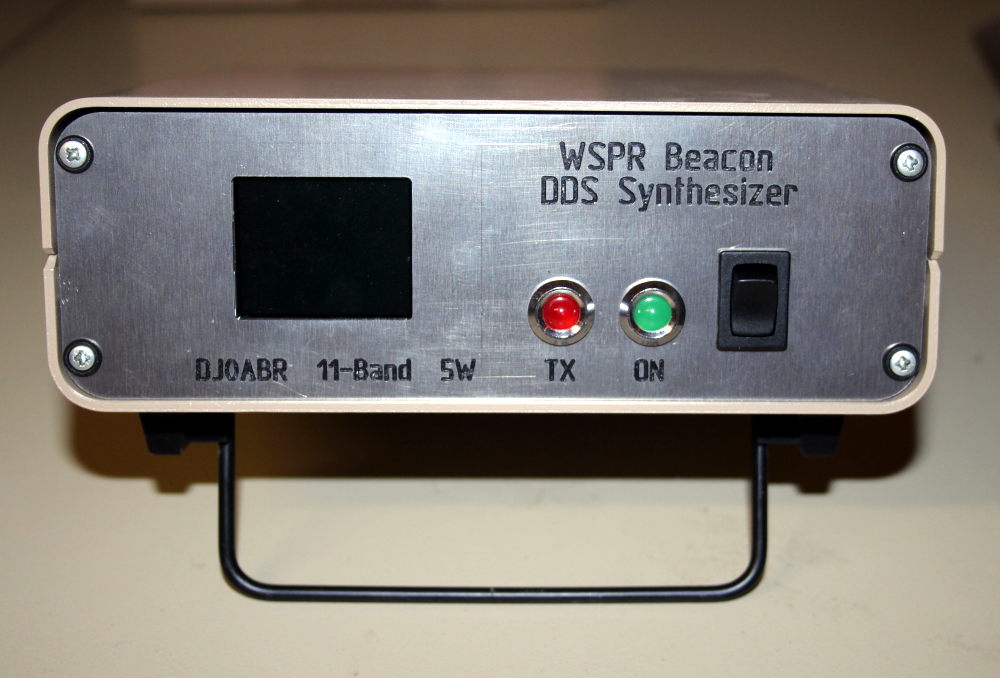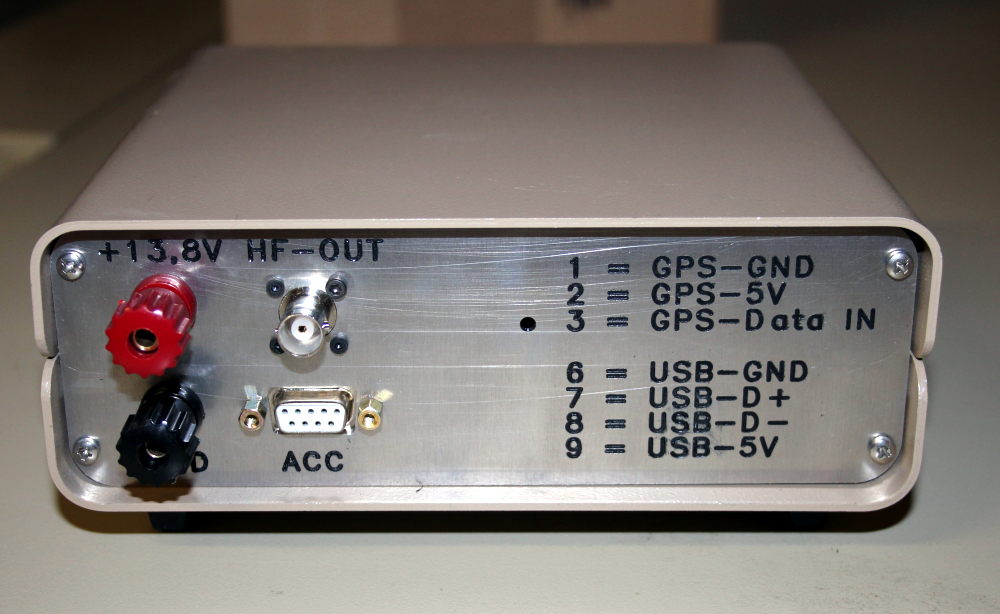WSPR, CW, D-Star, FM, AM, Synthesizer and Sweep Frequency Signal Generator 100kHz to 160MHz
works completely independent and can be configured either with a PC (Windows, Linux or Mac) or via
Bluetoooth with an Android Smartphone
This project makes use of the capabilities of a modern DDS Synthesizer to create a WSPR beacon and a complete powerful Signal generator capable of various modulation and test modes. OMs interested to build this unit can inquire with the author DJ0ABR regarding availability of board. We are making both boards and a SMD population service available. The project is Open Source and free for use by Amateur Radio Operators. All documents can be downloaded from this web site. Commercial use, even partial is not permitted.
The special capability is the enormous bandwidth of all components from 100KHz to 160MHz, which covers 15 Ham bands with just one unit (137kc, 476kc, 160m, 80m, 60m, 40m, 30m, 20m, 17m, 15m, 12m, 10m, 6m, 4m, 2m). The 5W amplifier works on 11 bands, from 630m to 6m. The boards are very small thus useable for Field Days, portable and mobile operation. They can form the ideal base for example for CW QRP transmitters, Multi-Band WSPR operation, Testing and Measurements etc.
The unit is made up of the following components:
1. DDS Synthesizer and Multifunktion Beacon
| Generator 100kHz up to 160 MHz | |
| AD9859 DDS Synthesizer | |
| WSPR beacon for 15 HAM bands (long wave to 2m) | |
| CW beacon | |
| continous signal generator | |
| FM Modulator (adjustable: frequency, modulation index) | |
| AM Modulator (adjustable: frequency, modulation depth) | |
| Sweep | |
| automatic band switch for the 5 watts PA | |
| PC-Software for WSPR and DDS settings (Windows, Linux, Mac, Android) |
Project Status:
R&D: finished
PCB: finished
Firmware: finished
PC-Software: finished
2. 5 Watt Amplifier for 11 Ham Bands
| C or A, as well as mixed C/A-mode | |
| for CW and Digi-Modes, mode A for SSB | |
| 400kHz to 54 MHz in 11 HAM bands | |
| 11 filter banks switched by relays for achieve better than 40 dB harmonics suppression | |
| min. 5 Watt at 13,8 Volt (max. 9 watts) | |
| operation for higher power up to 20 volts | |
| 16watts Mitsubishi Mosfet |
Projektstatus:
R&D: finished
PCB: finished
Firmware: finished
PC-Software: finished
3. Precision Power Analyzer for the Milliwatt range
| 0,1mW up to 200 Watt | |
| Resolution: 0,1 mW | |
| firmware supports automatic power selection for WSPR | |
| calibration function |
Projektstatus:
R&D: finished
PCB: finished
Firmware: finished
PC-Software: finished
4. TFT Farbdisplay
| shows function and status of all operating modes | |
| inexpensive 1,8" Farbdisplay | |
| connection via SPI connector |
Projektstatus:
R&D: finished
PCB: not required
Firmware: finished
Links to the pages for each board:
DDS Synthesizer with multifunction and WSPR beacon
power amplifier for 11 HAM bands, 5 watts min.
Boards (PCBs):
The 5 W amplifier with 11 band filters utilizes mostly conventional parts and should be easy to assemble by every ham.
The DDS board however uses mostly small SMD part. We therefore plan to have a number of boards prebuilt. Depending on the number of boards requested the price for this service will go down. Therefore if interested please get in touch with us asap. (email) If prebuilt boards are used - only a few items need to be added manually like the plugs, an electrolyzing cap and a ferrite.
Images of the prototype:
Here is a picture of the prototype in a Feltron box. The DDS board utilizes a Display.

This image shows the unit in WSPR mode. The red bar on the display shows the progress of the WSPR transmission. The unit is used at this location on three bands (20, 15 and 10m) and connected to a 3 Band Yagi. The display is very clear and much better than can be shown in this reduced size reproduction.

On the back side of the unit you see the 9 pin socket which carries the GPS and USB signals. We selected a BNC socket for RF-out to allow utilization of common BNC cables.

The amplifier does not require a heat sink. It is attached to the frame and this provides sufficient cooling.